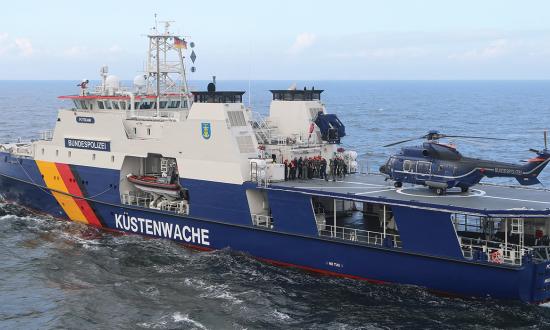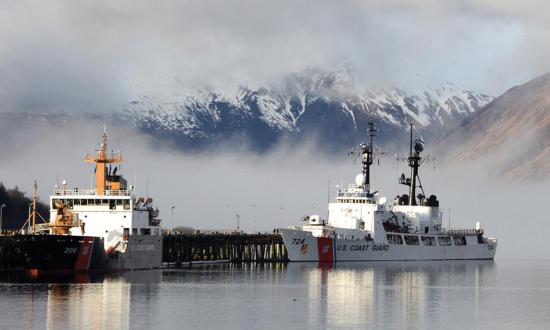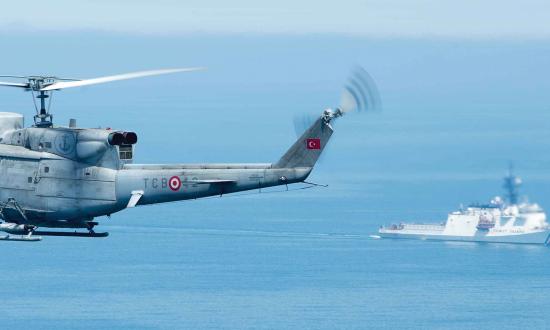Germany’s three Potsdam-class 86-meter offshore patrol vessels (OPV 86s) were ordered in December 2016 for use by the Bundespolizei See, the maritime arm of the Federal Police force, which itself forms the largest law enforcement element of the German Küstenwache (see “Protecting Europe’s Troubled Seas,” pp. 90–92). Construction began on the first OPV with a ceremonial keel laying on 14 August 2017. Named the Potsdam and numbered BP-81, she was delivered in 2019 and was followed later that year by the Bamberg and Bad Düben (pictured here), which are numbered BP-82 and BP-83. Fassmer Shipyard in Germany built the three OPVs. Portions of the ships were constructed in Lithuania and transferred to Germany for outfitting and final assembly, permitting an accelerated delivery schedule for all three ships.
Measuring 283 feet long with a 44-foot beam and a 22-foot draft, the hull and superstructure are built of steel. The OPVs are slightly larger than the U.S. Coast Guard’s Famous/Bear-class 270-foot medium-endurance cutters. The German OPVs displace 1,890 tons and are powered by two 4,080-kW diesel engines and two 600-kW electric motors, the latter ideally suited for slower-speed inspection operations. Two controllable--pitch propellers provide a top speed of 21 knots, and two bow thrusters are fitted for enhanced maneuverability.
Each ship can accommodate up to 48 personnel comfortably, although a crew of 38 is considered typical. The class is fitted with a helicopter landing deck aft, able to accommodate one Eurocopter AS.332 Super Puma helicopter. Although a hangar is not fitted, the Potsdams are able to conduct helicopter refueling when required. Belowdecks, there is sufficient space to transport five 20-foot containers, tailorable for specific mission requirements. The OPVs can launch and recover two small interceptor boats carried in side bays amidships. In contrast to the previous generation of unarmed Federal Police patrol ships, the OPV 86s are fitted with a Bofors Mk 3 57-mm multipurpose cannon forward of the bridge. The 57-mm gun has a maximum range of more than 18,000 yards and can fire at a rate of four rounds per second. Known as the Mk 110 in U.S. service, this medium-caliber gun also arms both classes of U.S. Navy littoral combat ships and the U.S. Coast Guard’s Legend/Bertholf-class national security cutters.
The Potsdam class is expected to operate primarily in the North and Baltic Seas conducting border patrol and security operations, but they remains available to support a range of domestic and international law enforcement and humanitarian assistance missions wherever they may be needed.






